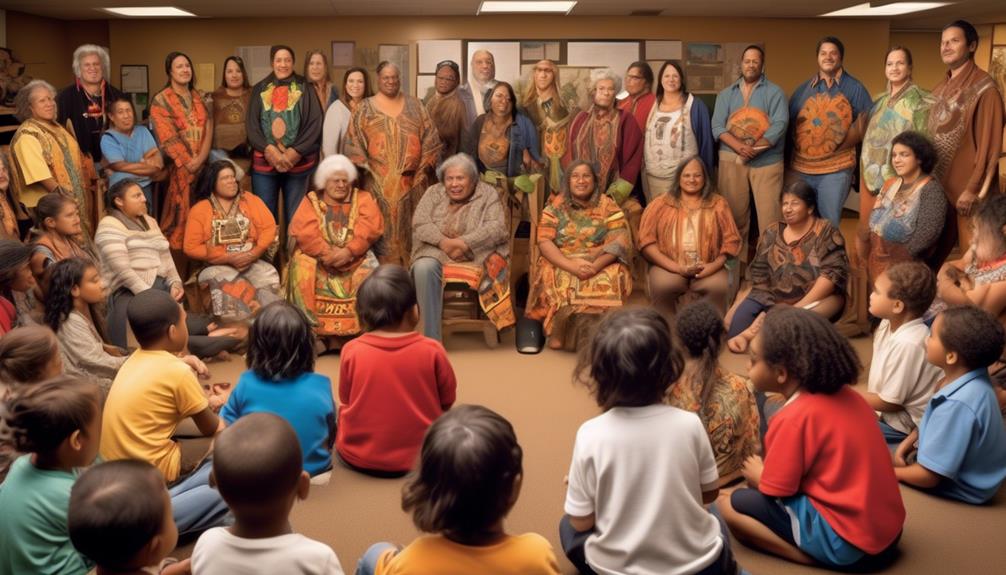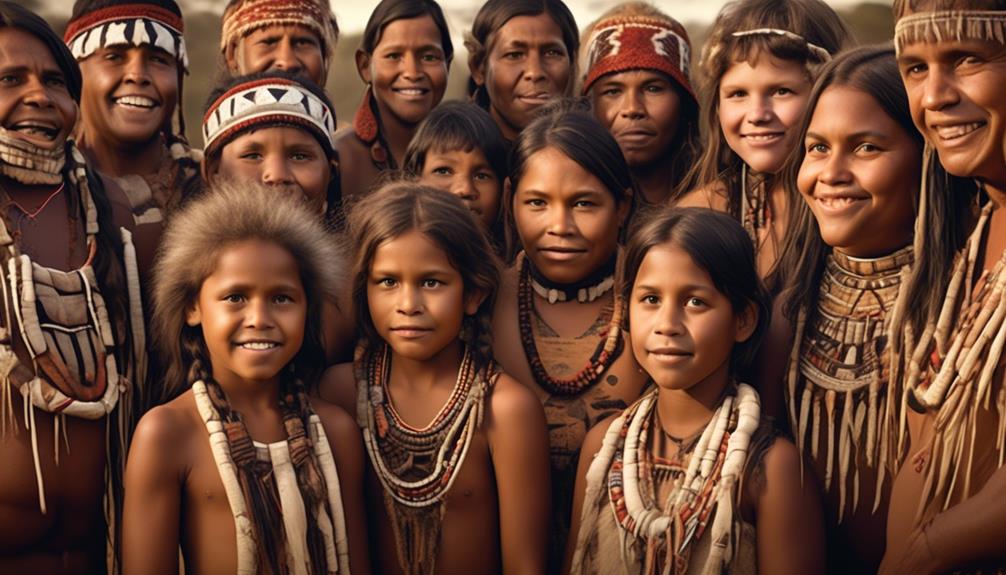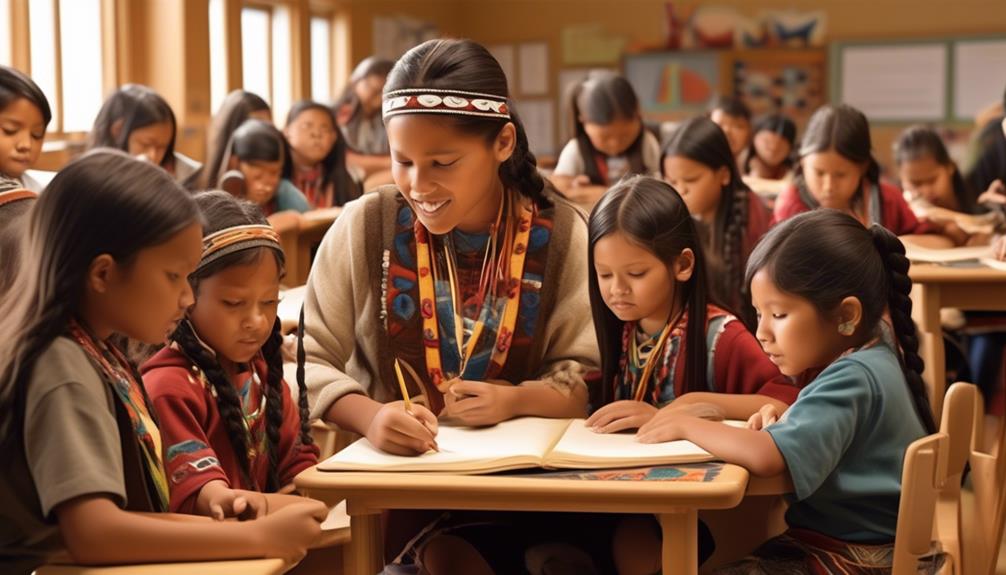Language documentation is essential because it helps preserve the world’s linguistic and cultural diversity. It captures unique voices, stories, and traditions before languages disappear, supporting revitalization and cultural continuity. Through collections like AIATSIS, you can access accurate records that benefit researchers, communities, and future generations. By understanding this importance, you’ll see how documentation safeguards identities and promotes cultural understanding—keep exploring to discover the full significance behind these collections.
Key Takeaways
- AIATSIS Collections preserve Indigenous languages, safeguarding cultural heritage and linguistic diversity for future generations.
- They provide valuable resources for research, revitalization, and community engagement efforts.
- Documentation helps maintain accurate, high-quality records of languages at risk of extinction.
- AIATSIS promotes cross-cultural understanding by making Indigenous languages accessible and studyable.
- The collections support efforts to recognize, respect, and sustain Indigenous identities and traditions.

Language documentation is crucial because it helps preserve the rich diversity of human communication before many languages disappear. When you engage in documenting languages, you’re actively contributing to the ongoing effort of linguistic preservation, guaranteeing that these languages remain part of the world’s cultural heritage. Every language holds unique insights into the history, traditions, and worldview of its speakers. By capturing and archiving these languages, you not only prevent them from fading into silence but also provide future generations with invaluable resources to learn from and connect with their ancestors’ ways of life.
Preserving languages safeguards human history, culture, and diversity for future generations.
The importance of linguistic preservation cannot be overstated, especially as globalization and cultural shifts threaten the survival of many indigenous and minority languages. When you participate in language documentation, you help create a lasting record that can be accessed by linguists, community members, and researchers. This record serves as a foundation for revitalization efforts, enabling communities to reconnect with their linguistic roots and maintain their cultural identities. It’s an act of respect and recognition for the communities whose languages are at risk of disappearing.
Furthermore, documenting languages enriches our collective cultural heritage. You’re helping to ensure that the stories, oral traditions, and knowledge embedded within these languages are safeguarded for future generations. This work supports the preservation of cultural diversity, which is indispensable in a world that often favors dominant languages and cultures. When you contribute to language documentation, you’re fostering a more inclusive understanding of human history and expression, one that values the contributions of all communities, no matter how small or marginalized. Additionally, high-quality language documentation enhances the accuracy and usefulness of linguistic archives, making them more accessible for research and revitalization efforts.
Your efforts in language documentation also facilitate cross-cultural understanding. By recording and studying these languages, you enable others to learn about different ways of thinking, living, and expressing themselves. This process deepens appreciation for cultural differences and promotes respect among diverse groups. In essence, your work helps bridge gaps between communities, fostering a shared sense of humanity rooted in the recognition of linguistic and cultural diversity.
Frequently Asked Questions
How Are Indigenous Languages Prioritized for Documentation?
You can prioritize indigenous languages for documentation by focusing on those with the most linguistic diversity and cultural significance. This helps preserve unique traditions and knowledge. You might work with communities to identify languages at risk, ensuring their voices are heard. By actively documenting these languages, you support cultural preservation and foster a deeper understanding of indigenous heritage, helping safeguard these crucial languages for future generations.
What Challenges Are Faced in Language Documentation Efforts?
Did you know nearly 40% of indigenous dialects are endangered? You face challenges like limited resources, remote locations, and the risk of archival preservation issues. These obstacles make documenting endangered dialects difficult, risking their loss forever. You must work carefully to gather, store, and protect these languages, ensuring future generations can access their cultural heritage. Overcoming these challenges is vital to safeguarding indigenous linguistic diversity.
How Does AIATSIS Ensure Community Involvement?
AIATSIS guarantees community involvement through active community engagement, prioritizing local voices in language documentation. You’re encouraged to participate in decision-making processes, ensuring cultural preservation aligns with community priorities. They collaborate closely with community members, respecting traditional knowledge and customs. This approach fosters trust, empowers communities, and guarantees that language preservation efforts genuinely reflect the community’s cultural identity and needs, making the documentation meaningful and sustainable.
What Technology Is Used in Language Archiving?
You use advanced digital archiving technology and linguistic databases to preserve languages. AIATSIS employs secure digital platforms that store audio recordings, texts, and images, making them accessible for future generations. These tools enable efficient organization, searchability, and sharing of language resources. By harnessing digital archiving, you guarantee that endangered languages are documented accurately and remain an essential part of cultural heritage for communities and researchers alike.
How Can Language Documentation Benefit Future Generations?
You’ll help guarantee linguistic preservation and cultural continuity for future generations. Studies show that over 40% of the world’s languages are at risk of disappearing, making your efforts essential. By documenting languages now, you enable future generations to access their ancestors’ words and stories. This preserves cultural identity, fosters understanding, and keeps traditions alive, allowing communities to maintain their unique heritage and pass it down with pride.
Conclusion
By preserving language, you’re safeguarding a world’s soul—each word a drop of rain nourishing cultural roots. When you document these voices, you plant seeds of identity that bloom for generations. Think of collections like Aiatsis as lanterns, guiding lost languages through darkness. Your efforts become the bridge between past and future, ensuring that these stories continue to whisper their wisdom. In doing so, you keep the flame of culture alive, shining bright for all to see.
Mary is a passionate writer who brings creativity and a fresh perspective to our team. Her words have the power to captivate and inspire, making her an essential contributor to our content. Mary’s commitment to storytelling and dedication to promoting Indigenous culture ensures that her work touches the hearts of our readers. We’re fortunate to have her as part of our team.









